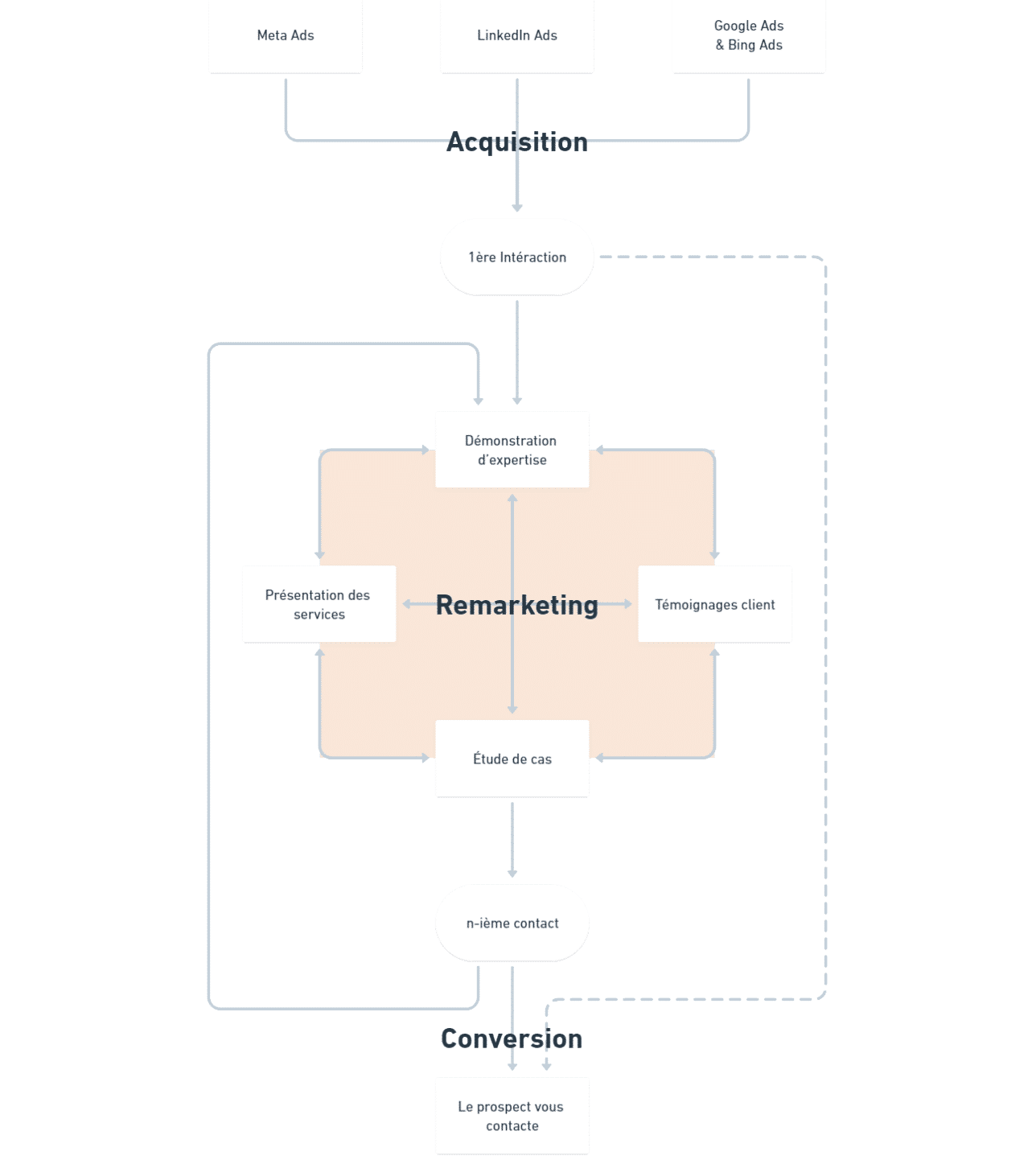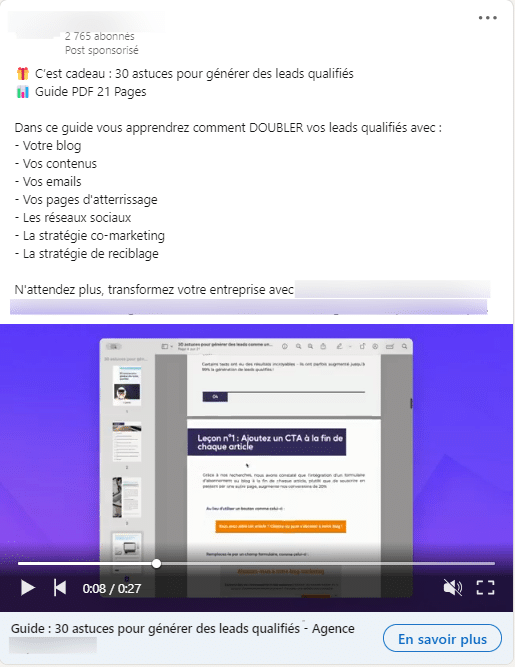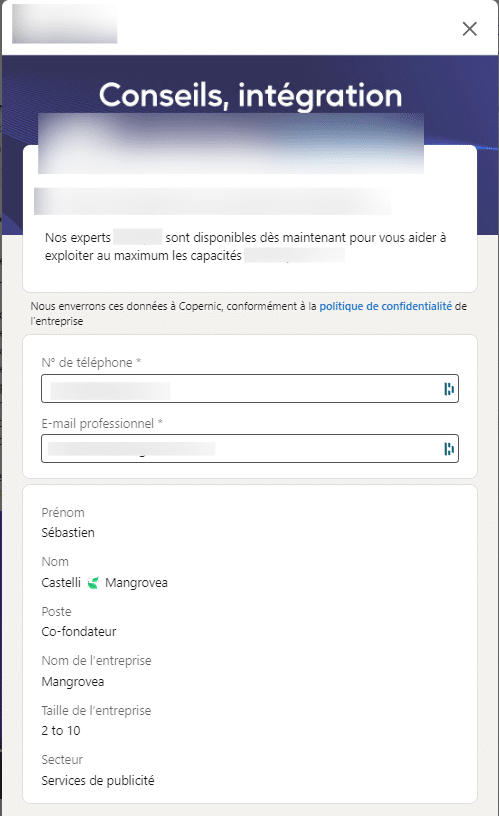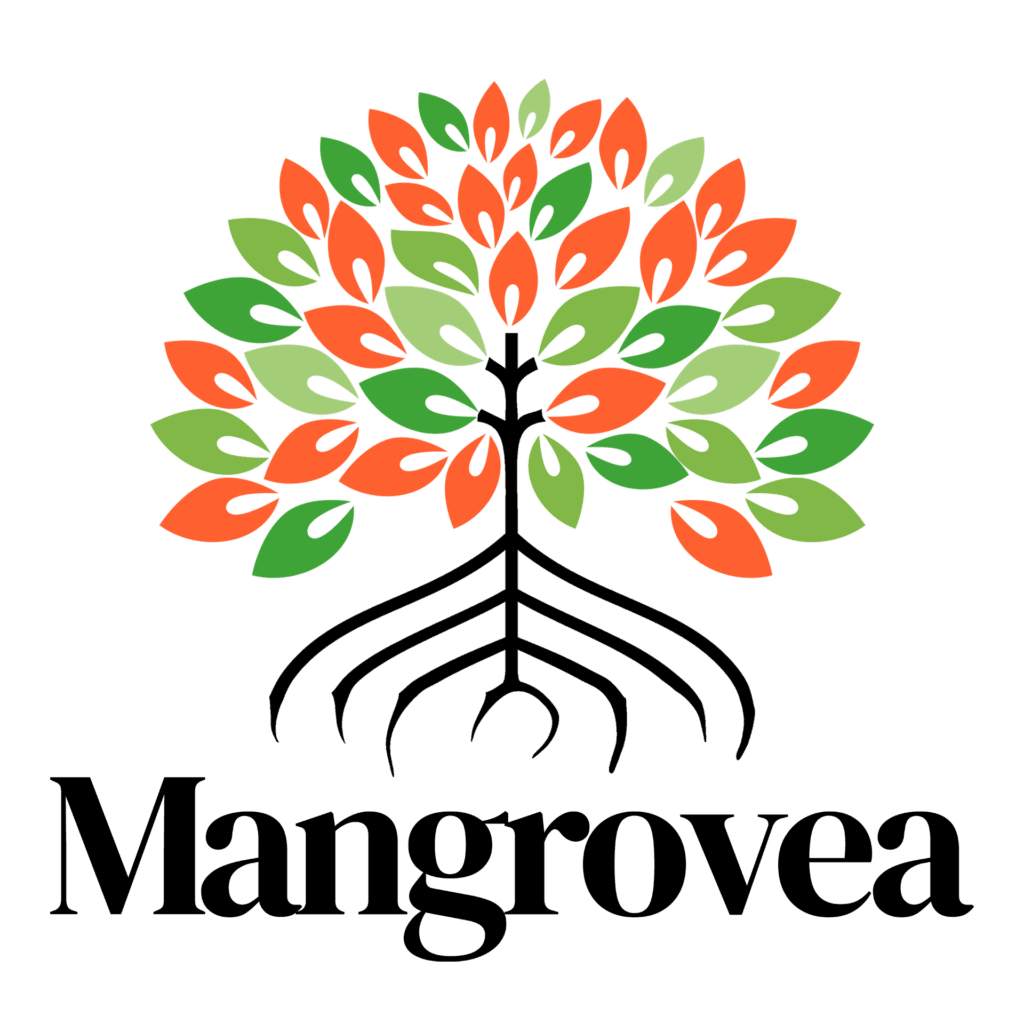In this guide, I present the most influential and effective methodologies in B2B digital marketing today: Demand Generation, Lead Generation and Account Based Marketing (ABM). Each of these strategies offers unique advantages and addresses specific needs in the B2B customer journey. Whether you're looking to refine your marketing approach, increase conversions, or build deeper relationships with your key customers, this guide will provide you with the tools and knowledge you need to excel.
But let's start with a point of context;
Traditional approaches vs. B2B specificities in Ads
If you run a B2B business and offer a relatively expensive service, you may have realized that most of the approaches proposed by consultants are not entirely aligned with your business. This mismatch is all the more evident on the internet, where the majority of strategic content, such as training courses, blogs and guides, is primarily focused on B2C practices.

In fact, advertising performance is often measured by conversion volume (e-commerce sales, forms sent), which is appropriate for impulse purchases and low-cost products. It is, for example, relevant to measure the performance of an e-commerce site by its sales volume.
However, this approach shows its limitations in the B2B context, particularly for expensive services requiring careful thought before purchase. The rigid application of standard techniques, without taking into account the fundamental differences in the decision-making process of B2B customers, can lead to a short-term vision that is disconnected from actual performance. In practice, this results in the generation of a large number of unqualified and therefore useless leads.
To sum up, selling shoes for €80 online is not the same as promoting your service for several thousand euros/month. Each of these fields requires specific expertise.
In the B2B sector, the sale of high-end services requires adaptation to several realities:
- No compulsive buying Important purchasing decisions are often the result of careful thought and analysis, requiring detailed presentations and convincing data.
- Multiple decision-makers Decision-making can involve several hierarchical levels and departments, requiring a targeted approach adapted to each group of influence.
- Longer sales cycles : The complexity and high cost of services lengthen sales cycles, requiring customer relationship management and constant follow-up.
Introduction to the marketing funnel
The funnel is often used in marketing to represent the process of converting leads into customers. The aim is to capture as many qualified leads as possible (top of the funnel) and convert as many as possible into customers (bottom of the funnel).
The funnel is generally broken down into 4 stages:
- The discovery The prospect is discovering your brand, product or service for the first time.
- The interest The prospect starts to show an interest in what you have to offer.
- The desire The prospect begins to actively consider your product or service as a possible solution to their need or problem.
- The action The prospect makes the decision to contact you and buy.
It's easy to see that whereas in B2C, or in B2B on relatively low baskets, the funnel will be quickly traversed (sometimes even from the very first ad), in B2B things are a little more complicated.
Let's take a look at the strategies we can use to work on each of these stages.
Strategic approach to Demand Generation
Traditionally, agencies and advertisers focus on capturing existing demand. This often involves optimizing their presence on specific, highly intentional queries, such as "Shopify website design agency" on Google. While this method targets users already looking for specific solutions, it comes up against two major constraints: the limited volume of these queries and strong competition.
The demand generation strategy takes a different approach. It aims to address prospects earlier in their buying journey. At this stage, prospects are often unaware of the problem your service can solve, the extent of their needs, or the existence of suitable solutions. This strategy therefore focuses on the top of the marketing funnel, with the aim of raising prospects' awareness, educating them about existing problems and solutions, and gradually getting them to consider your offer.
Level of target intent :
One of the major advantages of the demand generation strategy is its ability to generate highly qualified, intentional leads over the long term. In addition to driving conversion, this approach helps create and engage a community around your brand and services. This creates a dynamic where, even if some community members don't become customers immediately, they contribute to brand recognition and credibility, facilitating future conversions.
To effectively implement a demand generation strategy, it's essential to develop a quality educational content strategy. This content must be sufficiently varied and regularly renewed to maintain prospects' interest over time. As conversion is not immediate with this approach, it often takes several months to see tangible results.

As we're working at the top of the funnel here, advertising media such as LinkedIn Ads or Meta Ads will often be favored for this approach. Indeed, these platforms are effective at pushing content to targeted audiences without depending on their active searches. You can also turn to Google Ads' display inventory (Youtube, Discover, Gmail), which also offers a campaign format dedicated to demand generation which can prove formidable.
Lead Generation Strategy
Unlike demand generation, lead generation strategy focuses more on the immediate conversion of prospects into customers.
The traditional approach is to offer valuable resources - ebooks, reports, checklists - in exchange for prospects' contact details.

LinkedIn campaigns, with their integrated forms, make it easy to gather information.

Once leads have been captured, it's important to sort them according to their level of intent, which generally corresponds to the phases of the buying cycle: discovery, interest, desire and action.
There are various methods for prioritizing leads, known as lead scoring. One of the most basic methods is simply to find out which of your content sources your leads come from. Content is generally divided into 3 categories:
- TOFU (Top of the funnel) : Aims to attract a wide audience. Content is generally educational or informative. The aim is to raise awareness and educate prospects about a problem or need. It corresponds to the "Discovery" stage.
- MOFU (Middle of the funnel) : Aims to provide a solution to leads who already have some knowledge of their problem or need. The aim is to help leads evaluate the different solutions available and steer them towards yours. It corresponds to the "Interest" stage.
- BOFU (Bottom of the funnel) Lead generation: Aimed at leads who are ready to make a purchasing decision. The aim is to convince the lead that your solution is the best one to meet their specific needs. It corresponds to the "Desire" stage.

This method is very popular, but not without its challenges. As you're giving away a resource in exchange, it's quite common for users to be uninterested in collaborating and simply looking to obtain the content. As a result, the quality of leads can vary, with some contacts having little conversion potential. Also, the creation of quality material requires a significant investment of time and resources, and is often botched, creating disappointment when the prospect opens it, and thus doing the opposite of what we'd like it to do.
To succeed, it's essential to target accurately, to offer relevant content of real value to the prospect, and to set up an efficient system to qualify and manage the leads generated.
All in all, this approach retains the major advantage of generating immediate leads in large quantities to feed the sales pipeline.
Lead Generation vs Demand Generation: How to choose?
Lead gen or demand gen? (Detailed guide), in brief :
Demand Generation is a marketing strategy deeply rooted in building long-term relationships with customers, focusing on education, engagement and the creation of quality content. It is particularly well suited to companies seeking sustainable growth and willing to invest in creating a strong, lasting bond with their customers.
Lead Generation, on the other hand, focuses on rapidly creating a base of contacts and feeding the sales pipeline. It is particularly effective for start-ups or companies looking to test a new service and get immediate feedback from the market. With its ability to generate a large and constant volume of leads, Lead Gen is also an excellent choice for well-established companies with a sizeable sales force. This strategy enables constant interaction with prospects and facilitates rapid conversion into customers.
It's important to note that these two strategies are not mutually exclusive. Indeed, for a well-established company, the combined use of Demand Gen and Lead Gen can be extremely beneficial. While Demand Gen builds and maintains the brand over the long term, Lead Gen can be used as a complement to stimulate immediate results in terms of sales.
| Demand Gen | Lead Gen | |
| Develop the community around the brand and services | +++ | + |
| Effective for educating targets when selling a complex service | +++ | ++ |
| Effective for generating a contact base and feeding the sales pipeline | + | +++ |
| Generate qualified, intentional leads | +++ | + |
| Generates a consistent, constant and predictable lead volume. | + | +++ |
| Suitable for companies with a small sales force | +++ | + |
| Continues to have a long-term effect thanks to evergreen content | +++ | + |
| Maintains relationships with prospects | + | +++ |
| Quick and easy to set up | + | +++ |
| Quick turnaround before first results | + | +++ |
Introduction to B2B ABM (Account Based Marketing) strategy
Account Based Marketing (ABM) is a strategic approach to B2B marketing that focuses resources on a defined set of key accounts. This methodology moves away from traditional marketing strategy that targets a broad audience, and focuses instead on creating personalized, highly targeted relationships with specific customers.
In ABM, each key account is treated as a unique market. Marketing campaigns are designed specifically for these accounts, taking into account their specific needs, challenges and objectives. This involves a deep understanding of the customer and close collaboration between marketing and sales teams. The aim is to deliver a highly personalized, relevant experience that fosters a stronger, more profitable relationship.
The main advantage of ABM is its effectiveness in terms of ROI (return on investment). By targeting the accounts most likely to generate revenue, companies can allocate their resources more efficiently, avoiding spending time and money on less relevant prospects. This approach also strengthens relationships with key customers, which can lead to greater loyalty and cross- or up-selling.
In short, ABM is a refined, targeted strategy that addresses the specific needs of a company's most valued customers, with an emphasis on personalization and long-term relationships.

Develop your B2B marketing mix
The place of LinkedIn Ads
Despite the conventional wisdom that LinkedIn ads are too expensive, the reality is that they offer unique value: LinkedIn is the leading professional social network, and its ability to precisely target professionals according to sector, position or skills, makes its LinkedIn Ads ad network an excellent lever for addressing the top end of the funnel, while maintaining precise targeting, which is less obvious on other platforms such as Google or Meta.
Whether you opt for a leadgen and/or demandgen approach, LinkedIn offers a whole range of tools and advertising formats that will enable you to deploy effective communication in both cases. We explain it all here:




